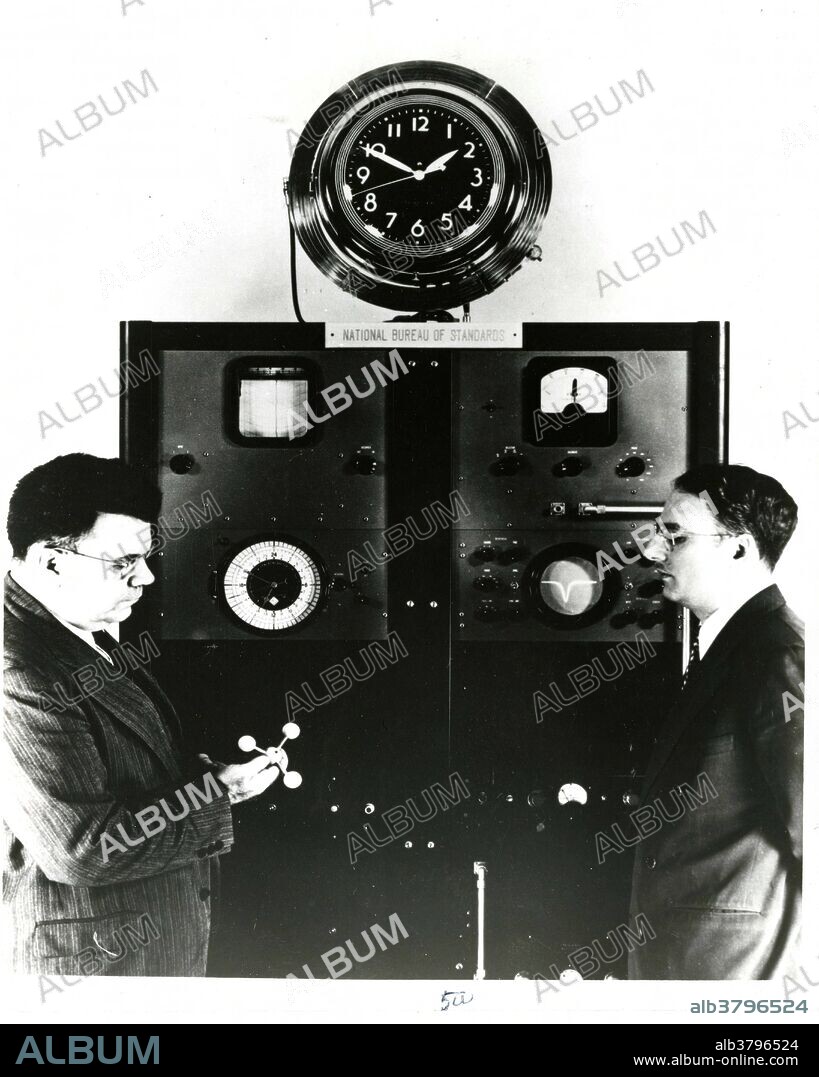alb3796524
Edward Condon with First Atomic Clock

|
Zu einem anderen Lightbox hinzufügen |
|
Zu einem anderen Lightbox hinzufügen |



Haben Sie bereits ein Konto? Anmelden
Sie haben kein Konto? Registrieren
Dieses Bild kaufen.
Nutzung auswählen:

Titel:
Edward Condon with First Atomic Clock
Untertitel:
Siehe automatische Übersetzung
Edward Condon (at left) with the first atomic clock. Edward Uhler Condon (March 2, 1902 - March 26, 1974) was a distinguished American nuclear physicist, a pioneer in quantum mechanics, and a participant in the development of radar and nuclear weapons during WWII as part of the Manhattan Project. He was the director of the National Bureau of Standards (now NIST) from 1945 to 1951. An atomic clock is a clock device that uses an electronic transition frequency in the microwave, optical, or ultraviolet region of the electromagnetic spectrum of atoms as a frequency standard for its timekeeping element. The principle of operation of an atomic clock is not based on nuclear physics, but rather on atomic physics; it uses the microwave signal that electrons in atoms emit when they change energy levels. The first atomic clock was an ammonia maser (microwave amplification by stimulated emission of radiation) device built in 1949 at the U.S. National Bureau of Standards (NBS, now NIST). The world's first atomic clock using the ammonia molecule as the source of vibrations.
Persönlichkeiten:
Bildnachweis:
Album / NIST/Science Source
Freigaben (Releases):
Model: Nein - Eigentum: Nein
Rechtefragen?
Rechtefragen?
Bildgröße:
4641 x 5801 px | 77.0 MB
Druckgröße:
39.3 x 49.1 cm | 15.5 x 19.3 in (300 dpi)
Schlüsselwörter:
 Pinterest
Pinterest Twitter
Twitter Facebook
Facebook Link kopieren
Link kopieren Email
Email
